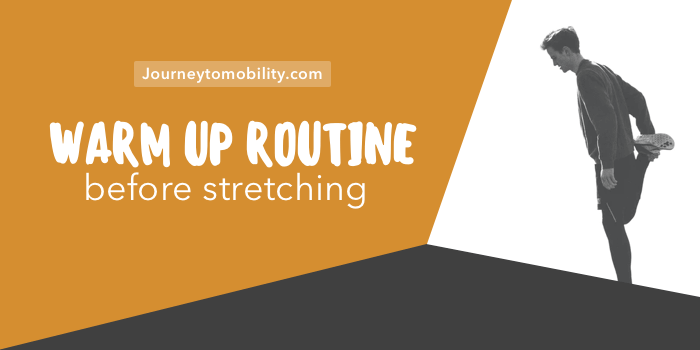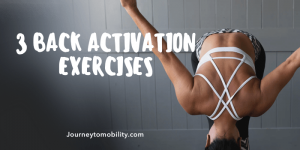Why is it Important to Warm Up?
No matter how long you’ve been training for, it’s important to always get in a good warm up routine before you start stretching. Warming up your muscles help to improve mobility.
When your muscles are cold, they are not able to elongate. They are stiff like an elastic band when you first try to pull on it. Warming up increases blood flow to your muscles to help your joints move better, reducing stiffness and risk of injury. Warm muscles have greater elasticity, which is why you may find it easier to get into a stretch at the end of your flexibility routine. Once your muscles are warm, you would then be able to access your body’s full range of motion.
Overview
- Passive vs. active warm ups
- General vs. workout-specific warm ups
- Breathing and control
- Cardio warm up routine
- Dynamic warm up routine
- Workout-specific warm up routine
Passive vs. Active Warm Ups
According to Christopher M. Norris PhD MSc MCSP, in Managing Sports Injuries, 2011 (1) – warm ups can either passive or active.
A passive warm up increases body temperature through an external heat source (ex. taking a hot shower). Whereas, an active warm up uses heat produced by the body during exercise.
General vs. Workout-Specific Warm Ups
There are two types of active warm ups: general and workout-specific warm ups. Both types of warm up consists of a low to moderate cardio followed by light dynamic stretching.
General warm ups take you through a series of dynamic movements that uses the whole body. For example, running, jumping jacks, jump ropes, burpees, cycling etc..
Workout-specific warm ups include exercises where you go through similar movements to what you will be doing during your workout (at a lower intensity). Workout-specific stretches are beneficial because it improves your coordination, balance and strength for activities that require some level of skill.
Breathing and Control
Like any workout, warm ups require you to breathe correctly, have control and be aware of your body. It’s important to always be breathing and to take note of which muscles are activated. The practice of being aware will help you control the intensity of your stretch. Overtime, you will be able to adjust your stretches to a desired level without causing unwanted pain.
Full Body Warm Up Routine Before Stretching
Warm ups can take anywhere between 5-10 minutes. Your goal should be to ease into each movement and build up intensity. Your body temperature should actually go up by a few degrees!
Warming up before you stretch also makes your stretching session a lot more effective. If your goal is to improve flexibility, a good warm up would help reduce the resistance of connective tissues allowing your muscles to elongate.
Here is a quick warm up routine that you can do before you stretch.
Part 1 – Cardio Warm Up Routine
For the cardio section, focus on keeping your muscles engaged. Make each movement strong and intentional (someone shouldn’t be able to push your limbs out of place). Even out your breathing, your heart rate should go up but you should not be feeling like you’re out of breath.
Here are two of my favourite cardio warm up videos that you can do at home:
Part 2 – Dynamic Stretching Warm Up Routine
Dynamic stretches are stretches that you perform while moving. Remember to breathe out when your core and muscles contract. Think of it as ‘breathing out during the hard part of each move’.
This is a great video that goes through a variety of dynamic exercises:
Part 3 – Workout-Specific Warm Up Routine
These stretches should help with the exercises you plan to do during your workout or stretching session. For example, you should not be doing a warm for your upper body only if you plan to stretch your lower body.
You can create your own routine by stringing together movements that you will be doing during your exercise or stretch.
Conclusion
There are three parts to a good warm up routine: cardio, light dynamic stretching and workout-specific stretches. Always warm up the muscles that you will be working out afterwards.




